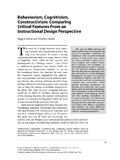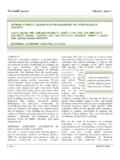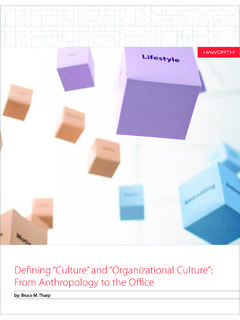Transcription of Public Relations - Tutorial - EdVenture Communications
1 PPuubblliicc RReellaattiioonnss TThheeoorryy aanndd PPrraaccttiiccee Compiled by: EEDDMMOONNDD NNGG June 2003 - 1 - PPuubblliicc RReellaattiioonnss TThheeoorryy aanndd PPrroocceesssseess Part 1 Topic 1: defining Public Relations Topic 2: Scope of Public Relations / For and Against PR Topic 3: Public Relations Theory and the Management of Populations Topic 4: Media Relations Part 2 Topic 5: Research and Evaluation in Public Relations Topic 6: Planning a Public Relations Program Topic 7: Implementing the Plan: Action and Communication in PR Part 3 Topic 8: Public Relations and New Communication Technologies Topic 9: Government Relations Topic 10: Internal and Community Relations TTOOPPIICC 11:: DDeeffiinniinngg PPuubblliicc RReellaattiioonnss Definition Public Relations is the deliberate, planned and sustained effort to establish and maintain mutual understanding between an organisation and its publics IPR Australia Public Relations is the distinctive management function which helps establish and maintain mutual line of communication, understanding, acceptance and cooperation between an organisation and its publics Harlow (1976) To do good, and communicate, forget not Hebrews 13.
2 16, cited in Sietel (1992) Harlow (1976) Communication Understanding Acceptance Cooperation Management of problems or issues - 2 - Keeps management informed on Public opinion Defines and emphasises responsibility of management to serve Public interest Helps management keep abreast of and effectively utilise change Serve as early warning system to help anticipate trends Use research and sound ethical communication techniques as its principal tools Barnes, D. (1967) Advise management .. on policy and effort of PR Channel and coordinate .. activities that affect PR within organisation Provide mechanics to explain .. organisation and its policies to its publics through communication media Ascertain and explain .. to management what various publics think about the organisation Seitel (1992) Hebrews 13:16 Doing good itself Ethical conduct Good deeds may speak for themselves Communicate good deeds worthwhile Communication important part of PR Publics Publics can be internal or external.
3 A Public is a group of people who share interests or concerns, affected by, and affecting organisation or its actions. May be latent/passive PR Functions Primary functions: To control publics To direct what people think or do in order to satisfy the needs and wants of an organisation To respond to publics, reacting to developments, problems or initiatives of others To achieve mutually beneficial relationships among publics by fostering harmonious interchange (PRSA 1980) - 3 - TTOOPPIICC 22:: SSccooppee ooff PPuubblliicc RReellaattiioonnss // FFoorr aanndd AAggaaiinnsstt PPuubblliicc RReellaattiioonnss Scope (activities and specialties) of PR Contemporary Practice Cutlip et al. 2000, : Publicity Advertising Press Agentry Public Affairs Issues Management Lobby Investor Relations Development IPR (UK): Program planning.
4 Analysing problems and opportunities, defining goals, recommending Writing and editing. Reports, news releases, brochures, speeches, scripts, publications Media Relations . Developing and maintaining good working contact with media Corporate identity. Developing and maintaining organisation s name, policies, reputation Speaking. Communicating effectively with individuals and groups Production. Liaising and supervising contacts for production of brochures, reports, video, multi-media programs Training. Preparing executives and designated people in organisation to deal with the media and Public appearances. Counselling. Advising top management on the social political and regulatory environment, how to avoid and respond to crisis, devise strategies Special events. Organising functions such as news conferences, exhibitions, events, tours and meetings to gain attention and acceptance of groups of people.
5 Research and evaluation. Gathering information to find out about existing attitudes or perceptions, before putting program of action in place and after activity undertaken, to see whether objectives have been achieved. Roles and key activities of PR practitioners (Johnston and Zawawi 2000, ): Communication Publicity Promotions Press agentry Integrated marketing - 4 - Issues management Crisis management Press secretary / Public information officer Public affairs / lobbyist Financial Relations Community Relations Internal Relations Industry Relations Minority Relations Media Relations Public diplomacy Event management Sponsorship Cause / relationship marketing Fund-raising Johnston and Zawawi (2000, ) Media Relations Sponsorship Crisis and issues management Shareholder Financial Relations Marketing Communications Community Relations Role of PR Practitioners Technicians.
6 Provide services such as producing publications ( news release and newsletter). Technicians hold lower positions within organisations than problem solvers. Problem solvers. Ask clients or senior management to rethink or clarify problems and to look for innovative solutions (Grunig 1987). Problem solvers belong to management, with responsibility for decision-making and policy formation. They are part of what is known as the dominant coalition of management. Public Relations , Marketing and Advertising Advertising is visibility, Public Relations is credibility (Meter 1999, ) PR and marketing working together in a campaign would complement each other, both to improve sales and to create a longer-term position in the marketplace - 5 - PR objective is to use information to strengthen the bond between the organisation and the customer not necessarily to increase sales in the short term, but to engender loyalty, selling more by building commitment over the long term Desirable Skills of PR Practitioners Understanding of PR and Communications theory Plan and analyse while developing problem solving approach Strong technical and communication skills Strong relationship/interpersonal skills Strong social, political and ethical appreciation.
7 Understanding big picture and interconnectedness of events Industry knowledge and perspective with knowledge of applications and processes Critical Skills Vocational skills in research, writing, listening, presentation and media Relationship skills interpersonal skills, political nous, networking ability, listening Professional skills ability to meet deadlines and plan ahead Strong ethical perspective Understanding technology and how it can be used as a tool Industry knowledge undergoing professional experience, understanding how theory informs practice, current affairs, developing lifelong learning Thinkers analytical, critical, strategic, evaluative, creative and lateral For and Against Public Relations Against PR: Deceptive and dishonest communication Vested interests Manipulating news / facts (Dennis 1991) Falsifying truth News distorted to favour the PR position Influencing audience / publics for own benefit Not actually interested in feedback, except in devising appropriate reply Mixed motive of PR Within government framework Advertisers prejudices Institutional agenda Gatekeeper filtering - 6 - Engineering of consent (Bernays 1952, cited in Ward 1999, ) A necessary and effective tool to soothe Public hostility, either real or potential, toward business (Chaffee and Petrick 1975, , cited in Ward 1999, ).
8 *Hill and Knowlton Case: Citizens for Free Kuwait a call to war as a result of PR campaign, where postmodernist views looks to signs in overtaking reality and reconstructing reality from myth For PR: Providing essential news service (Merrill 1991) Supplement and aid news media Expanding message pluralism in society Valuable adjunct to news dissemination activities of journalism PR practitioner is valuable to news media in providing basic news, commentary on certain news events, tips on news stories and access to news sources Following code of professional standards of PRSA Not intentionally communicate false or misleading information Obligated to use care to avoid communication of false or misleading information Adhere to truth and accuracy Refrain from engaging in any practice which tends to corrupt the integrity of channels of communication Ethical codes include allegiance to truth and credibility Check mechanism in our society Expands Public discourse Helps provide a wide assortment of news PR people do provide news to various publics and in doing so, provide essential Public service Generates information for use by the media Fills gaps in the news and provides similar services to those offered by advertising agencies Helps set the Public agenda Serves as.
9 Supplement and aid to news media, Gap-filler Expanding message pluralism in society - 7 - Propaganda and Public Relations PR as Public persuasion through the mass media (Hiebert et al. 1988, ) What makes the principal demarcation between propaganda and Public Relations even more ironic is that is was the practice of propaganda during the early decades of this century which gave birth to the modern Public Relations industry (Ward 1999, ) Ivy Lee (the inventor of press release) Engineering of consent (Bernays 1952, cited in Ward 1999, ) and power to shape Public opinion Publicity as a necessary and effective tool to soothe Public hostility, either real or potential, toward business PR: Writing the News (Ward 1999) Provide news media with an information subsidy use press releases PR firms in the US flood newsrooms with VNRs High degree of material in news derived from handouts to the press (McQuail 1992, ) 56% of stories had begun life as news releases (Schulz 1989) Sydney press survey 1989 90% of news stories were based on the calculated messages of the actors involved and percent relied on information routinely supplied to journalists (Sigal 1973) on two prestigious American newspaper Even quality press have a substantial debt to information subsidies from government PR sources (Sigal 1973) History of PR in Australia 1952 Sydney first listing for PR practitioners 1959 PRIA founded 1969 first degree course in PR offered at Mitchell College (now Charles Sturt University)
10 1840s and 1890s Education Act 1872, Promotion through press agentry the emergence of PR 1841 Sydney Morning Herald, first Australia s daily Press agent one who provided representation to the press 1943 General Douglas MacArthur in Brisbane with 35 PR staff change Australian PR, bringing with him, American methods of PR practice to Australia MacArthur uses the approach similar to US Office of War which instead of regarding any publicity as good publicity, chose the approach that press coverage must be managed, controlled and influenced to achieve an end that might have nothing to do with product sales, but everything to do with Public opinion - 8 - TTOOPPIICC 33:: PPuubblliicc RReellaattiioonnss TThheeoorryy aanndd tthhee MMaannaaggeemmeenntt ooff PPooppuullaattiioonnss Mackey (2000, ) Theories of persuasion, motivation and behaviour Theories of communication Theories of organisations and organisational communication Specialist theories of Public Relations , include PR and feminist theory What is theory?











